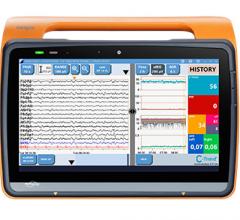June 30, 2008 - OBS Medical's predictive patient safety technology, Visensia, was the focus of a large study and peer-reviewed paper that was published in the June 23 issue of Archives of Internal Medicine, published by the American Medical Association.
The University of Pittsburgh Medical Center (UPMC) conducted this independent evaluation and published "Defining the Incidence of Cardiorespiratory Instability in Patients in Step-down Units Using an Electronic Integrated Monitoring System." Involving 1,000 patients (18,248 hours of continuous monitoring in Phase I), the study became the largest continuous monitoring study for cardiorespiratory variables in non-ICU patients.
Formerly known as BioSign, Visensia fuses up to five vital signs - heart rate, respiration rate, body temperature, oxygen saturation and blood pressure - into a numerical index, the Visensia Index. This Index is an indication of a patient's wellness and enables significant improvement in clinical outcome and optimization of hospital resource utilization.
The findings strongly support Visensia's data fusion platform, which fuses multiple vital signs into one predictive and actionable index. This study found this approach is more reliable and timely than manual scoring systems and significantly improved single channel vital sign monitoring.
For more information: www.obsmedical.com


 December 26, 2023
December 26, 2023 







